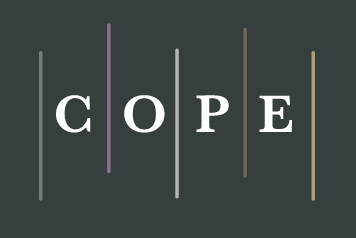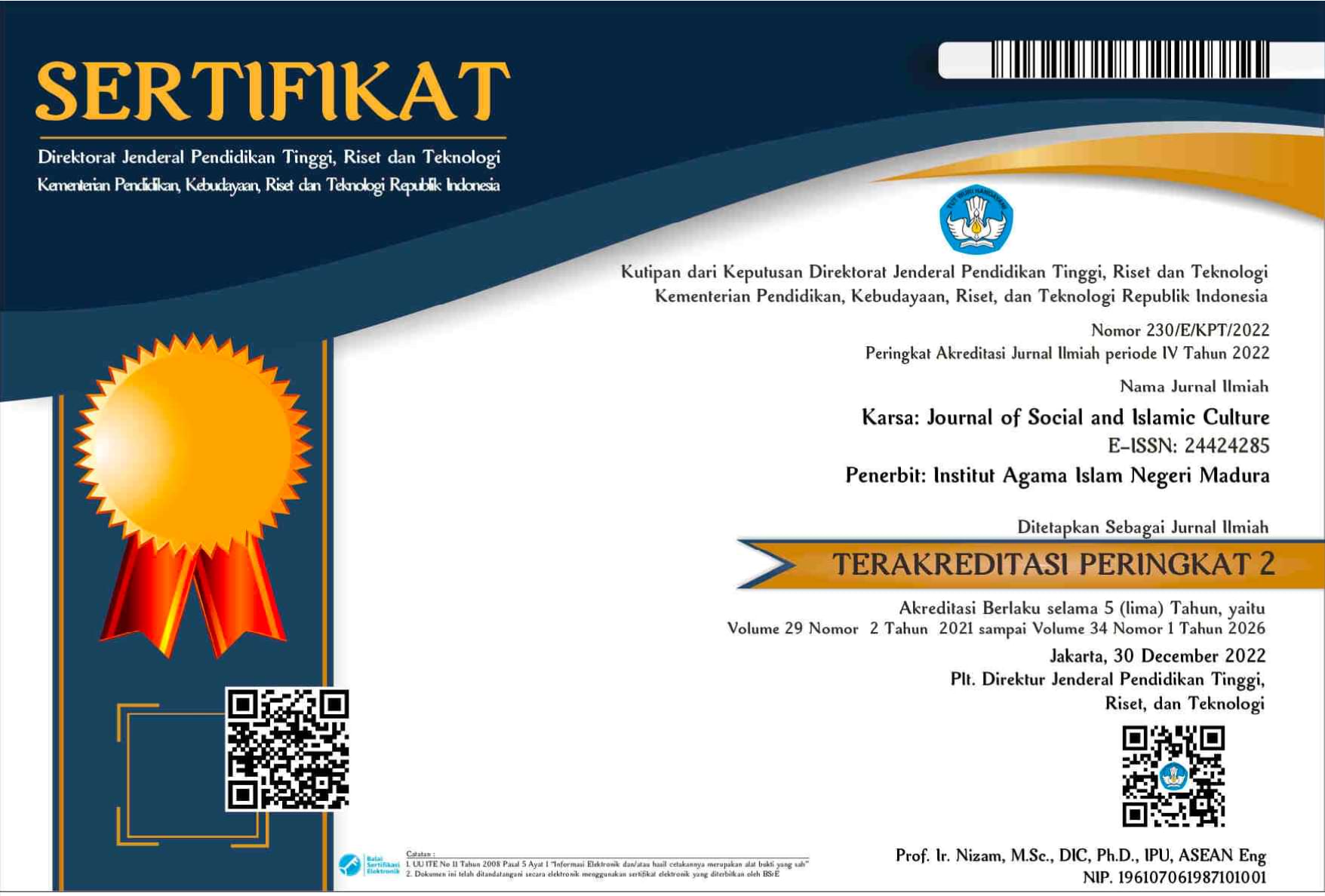Pecel Pithik: Tradition, Culture, and Its Impact on The Socioeconomic Welfare of Osingese People in Banyuwangi
 Abstract views: 421
,
Abstract views: 421
,
 PDF downloads: 390
PDF downloads: 390
Abstract
This study aimed to explore and describe the existence of pecel pithik in the tradition of Osingese tribe of Banyuwangi and its impact on the social economic welfare of the very community. Qualitative approach method was used to achieve the purpose of this research. Data were collected through observation, in-depth interviews, note taking, and recording. Data analysis method operative in the study was descriptive qualitative method with thematic content analysis. This study has evinced that pecel pithik is a cultural asset of Osingese society, which is rooted in fundamental traditional agrarian values with selamatan, originally presented in rice fields in the form of tumpeng before harvest in the hope of good harvest and blessing. This was done to improve the society’s welfare and elevate their degree. Today, pecel pithik presented at rituals (selamatan) such as barong ider bumi and tumpeng sewu (bersih desa). Pecel Pithik has now been a potential of socioeconomic capital for regional progress as a resource of economic development to improve societies’ welfare.
Downloads
References
Andriani, “Escherichia coli 0157 H:7 sebagai Penyebab Penyakit Zoonosis,” In Prosiding Lokakarya Nasional Penyakit Zoonosis, (Pusat Penelitian dan Pengembangan Peternakan Bogor, 2005)
Anoegrajekti, N.; Macaryus, S; Maslikatin T. “Seni Tradisi dan Ritual Using Berbasis Industri Kreatif,” in Prosiding Daya Literasi Dan Industri Kreatif Digitalitas Bahasa, Sastra, Budaya, dan Pembelajarannya, (FPBS UNJ, 2015): 1097
Anonim, “Pecel Pitik Makanan Tradisional dari Banyuwangi,” Negeriku Indonesiaku Bihneka Tungggal Ika (2015), Accessed July 22, 2017, http://www.negerikuindonesia.com/2015/09/ pecel-pitik-makanan- tradisional-dari.html.
Bungin, B. Metode Penelitian. Jakarta: IKAPI, 2010.
Darusuprapta, “Babad Blambangan.” Unpublished Dissertation, Universitas Gadjah Mada, 1984.
Djaafar, T.F. Rahayu, S. “Cemaran Mikroba pada Produk Pertanian, Penyakit yang ditimbulkan dan Pencegahannya.” Jurnal Penelitian dan Pengembangan Pertanian 26, no.2 (2007): 67-75.
Gustiani, E. “Pengendalian Cemaran Mikroba Pada Bahan Pangan Asal Ternak (Daging dan Susu) Mulai Dari Peternakan Sampal Dihidangkan,” Jurnal Litbang Pertanian 28, no. 3, (2009): 96-100.
Haryono, A. “Communicative Competence in Mlayokaken Tradition of Banyuwangi ‘Using’ Community.” The International Journal of Social Sciences and Humanities Invention 5, no 8 (2018): 4923-4930, Accessed July 24, 2017. doi:10.18535/ijsshi/v5i8.03
Haryono, A. Sofyan, A. Samudji. “The Tradition of Melayo kaken in Using Society: The Causal Factors and Its Impacts.” HUMANIORA 29, no. 1 (2017): 37-45.
Kusumaningtyas, A.., Wibisono, B., Kusnadi, “Penggunaan istilah makanan dan jajanan tradisional pada masyarakat di Kabupaten Banyuwangi sebuah kajian etnolinguistik,”. Jurnal publika budaya 1, no. 1, (2013): 1-9.
Kristanti, E. Y. “Perang Kuliner Ala Malaysia Ini Daftar 100 Makanan yang Diklaim Malaysia,” Viva, 27 September 2009, Accessed July 12, 2017, http://nasional. news. viva.co.id/news/read/92497 -ini-100-daftar-makanan- yang-diklaim-malaysia.
Moleong, L.J. Metodologi Penelitian Kualitatif Edisi Revisi. Bandung: PT. Remaja Rosdakarya, 2010.
Notoatmodjo, S. Metodologi penelitian kesehatan. Jakarta: Rineka Cipta, 2010.
Nur, T. K.H.M, Antariksa, N. S. “Pelestarian Pola Permukiman Masyarakat Osing di Desa Kemiren Kabupaten Banyuwangi,” Jurnal Tata Kelola dan Daerah 2, no. 1, (2010): 59-73.
Saputra, H. S.P. Memuja Mantra Sabuk Mangir dan Jaran Goyang Masyarakat Suku Using Banyuwangi. Yogyakarta: LkiS, 2007
Setiawan, I. Talapessy, A. Subaharianto, A. “Exertion of Cultures and Hegemonic Power in Banyuwangi: The Midst of Postmodern Trends,” KARSA: Journal of Social and Islamic Culture 25, no.1, (2017): 147-178.
Soetopo, D. “Hagemoni Kepala Desa dalam Tradisi Selamatan Kampung dan Ider Bumi Di Rejosari Kecamatan Glagah Kabupaten Banyuwangi,” Jurnal Ilmiah Kependidikan, Khasanah Pendidikan 10, no. 1 (2016), Accessed July 22, 2017: http:jurnalnasional.ump.ac.id/index.php/khasanah/article/view/1071.
The journal operates an Open Access policy under a Creative Commons Non-Commercial Share-Alike license. Authors who publish with this journal agree to the following terms:
- Authors retain copyright and grant the journal right of first publication with the work simultaneously licensed under a Creative Commons Attribution License that allows others to share the work with an acknowledgement of the work's authorship and initial publication in this journal.
- Authors are able to enter into separate, additional contractual arrangements for the non-exclusive distribution of the journal's published version of the work (e.g., post it to an institutional repository or publish it in a book), with an acknowledgement of its initial publication in this journal.
- Authors are permitted and encouraged to post their work online (e.g., in institutional repositories or on their website) prior to and during the submission process, as it can lead to productive exchanges, as well as earlier and greater citation of published work.





















